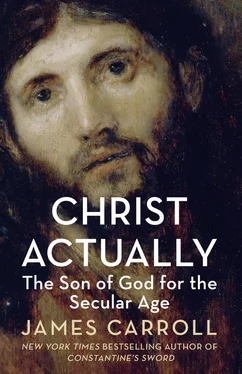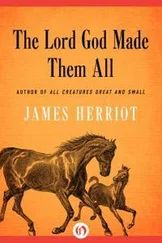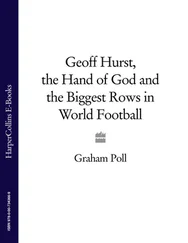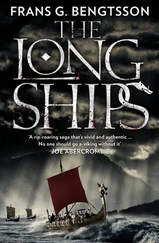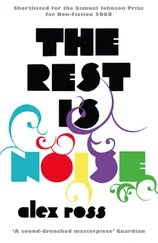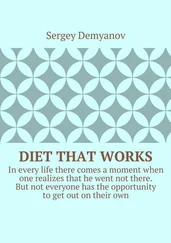
William Collins
An imprint of HarperCollins Publishers 1 London Bridge Street London SE1 9FG
WilliamCollinsBooks.com
This eBook edition first published in Great Britain by William Collins in 2014
Copyright © 2014 by James Carroll
James Carroll asserts the moral right to be identified as the author of this work
Grateful acknowledgement is made for permission to reprint extracts from the following copyrighted works:
“Christmas Trees” from New and Collected Poems 1952-1992 by Geoffrey Hill. Copyright © 1994 by Geoffrey Hill. Reprinted by permission of Houghton Mifflin Harcourt Publishing Company and the author. All rights reserved.
The Jewish Gospels: The Story of the Jewish Christ by Daniel Boyarin. Copyright © 2012 by Daniel Boyarin. Reprinted by permission of The New Press.
“Triduum” from A Little Book of Hours by John F. Deane (Manchester, England: Carcanet, 2008.) By permission of the author.
The Scripture citations in this book are from the Revised Standard Version, unless otherwise noted.
A catalogue record for this book is available from the British Library
All rights reserved under International and Pan-American Copyright Conventions. By payment of the required fees, you have been granted the non-exclusive, non-transferable right to access and read the text of this e-book on-screen. No part of this text may be reproduced, transmitted, down-loaded, decompiled, reverse engineered, or stored in or introduced into any information storage and retrieval system, in any form or by any means, whether electronic or mechanical, now known or hereinafter invented, without the express written permission of HarperCollins
Source ISBN: 9780008103484
eBook Edition © November 2014 ISBN: 9780008103491
Version: 2014-10-24
For Annie
The present life of man, O King, seems to me like to the swift flight of a sparrow through the great mead-hall wherein you sit at supper in winter, with the warm fire ablaze, whilst the storms of rain and snow prevail abroad; the sparrow, I say, flying in at one door, and immediately out at another, once more into the dark winter.
So this life of man appears for a little while, but of what went before, or what is to follow, we are utterly ignorant. If, therefore, this new teaching contains something more certain, it seems justly deserving to be followed.
—A chief counselor to Anglo-Saxon king Edwin in 627 1
Contents
Cover
Title Page
Copyright
Dedication
Epigraph
INTRODUCTION: Christ Actually
OPERATION SPARK
RELIGIONLESSNESS
JESUS A JEW
CHAPTER ONE: Personal Jesus
WHERE IS GOD?
ENCHANTMENT
GOD’S LEGS
THE SEARCH FOR MEANING
CHAPTER TWO: The First Holocaust
THE JEWISH WAR
THE TEMPLE IN RUINS
THE TEMPLE AS THE CAUSE OF THE GOSPEL
WARTIME LITERATURE
MARK’S APOCALYPSE
CHAPTER THREE: The Jewish Christ
LOW CHRISTOLOGY
A FOREIGN COUNTRY
THE ONE GOD?
THE SON OF MAN
YOUR RESURRECTION
PRECIOUS DISAPPOINTMENT
CHAPTER FOUR: Gospel Truth
THE MEANINGS OF JESUS
SYMBOL OF GOD
CAMERA IN THE TOMB
APART
CHAPTER FIVE: Jesus and John
ETERNAL THOU
FRIEND OR FOIL
TIME AND END TIME
PACIFISM
THE COMMISSIONING DEATH
CHAPTER SIX: Thou Art Peter
BE NOT AFRAID
NOT I, LORD
PETER STOOD
CHAPTER SEVEN: The Real Paul
CHRONOLOGY MATTERS
GOD SUFFERS WITH YOU
PAUL AND ROME
NOT A CHRISTIAN
THE FATE OF CARTHAGE
CHAPTER EIGHT: The Women, Too
MISOGYNY
DISCIPLESHIP OF EQUALS
MEN AT WAR
DISHONORING HER
MARY OF MAGDALA
CHAPTER NINE: Imitation of Christ
COMPARED TO HIM
AFTER SCHWEITZER
QUALITY OF SUFFERING
THE LEFT CHEEK
IN THE CLOUD
CONCLUSION: Because God Lives
THE FUTURE OF JESUS CHRIST
A SIMPLE FAITH
Notes
Index
Acknowledgments
Also by James Carroll
About the Publisher
INTRODUCTION
Christ Actually
Against wild reasons of the state
His words are quiet but not too quiet.
We hear too late or not too late.
—Geoffrey Hill 1
Operation Spark
In Germany, early in 1943, things got serious with “Operation Spark,” the anti-Nazi conspiracy to assassinate Adolf Hitler. In March, two bomb attempts were made on Hitler’s life. They failed, but in early April a number of the conspirators were arrested by the Gestapo. One of these was a young Lutheran theologian named Dietrich Bonhoeffer. For two years, he was imprisoned—first at Tegel military prison, in Berlin, and ultimately at Buchenwald and Flossenbürg concentration camps. A committed pacifist entangled in a plot to kill a tyrant, he wrote, “The ultimate question for a responsible man to ask is not how he is to extricate himself heroically from the affair, but how the coming generation shall continue to live.” 2
Bonhoeffer was executed three weeks before the war ended, before the horrors of 1945 were fully laid bare. Yet there is a hint in his statement that, in the thick of the evil, he had grasped what was now at stake: nothing less than the moral self-destruction, and perhaps the physical self-extinction, of the human species; its “continuing to live.” He did not survive to articulate the meaning of what he’d come to, but in subsequent years the fragments of thought he left flashed through Christian theology like crystal shards through a darkened conscience. That was especially so once Auschwitz was paired with Hiroshima—absolute evil absolutely armed: the death camp and the genocidal weapon all at once bracketing the human future. The mad nuclear competition that followed then made the problem of human survival literal.
Initiating a project for belief that has yet to be accomplished, Bonhoeffer declared himself in a letter to his student and friend Eberhard Bethge: “What keeps gnawing at me is the question, . . . who is Christ actually for us today?” That line, written in a Nazi cell, is a shorthand proclamation of Bonhoeffer’s penetration to the deepest question about the human condition, which raised, for a serious Christian, an equally grave question about Jesus Christ and the tradition that takes its name from him.
I, too, have found something “gnawing at me,” if in far shallower ways than the martyred German. As it happens, I was born precisely as Operation Spark was launched. The son of committed Irish Catholics, I fully embraced that legacy and came of age with Jesus Christ at the center of my identity. But as I grew older, tectonic shifts in culture, religion, politics, and structures of thought cracked the foundation of Christ’s meaning—even for me. Among the many factors that have contributed to that dislocation, none looms larger, I see now, than the still unreckoned-with moral catastrophe faced by Bonhoeffer. He was a first witness to the apocalyptic fervor of the Third Reich, the millennial character of the crisis—and the fact that “Christendom,” a culture in place since Charlemagne and nearly the sole context within which Jesus Christ had been understood, was mortally undermined by racist Nazi imperialism. And Bonhoeffer was one of the first to grasp how the ethical shattering of Christendom extended to the keystone of Christian faith—to Jesus himself.
I begin this grappling with the new actuality of Jesus Christ by recalling Bonhoeffer not just because I associate with his hinted-at intuition that we need a radically reimagined Jesus, but because his undeveloped and rudimentary inquiry was sparked—“Operation Spark” indeed—by that brutal confrontation with what has shown itself to be the double-barreled moral problem of our age. The bottomless pit that opened in southern Poland, and into which Bonhoeffer was already staring, was only one chamber of an abyss into which humanity had been plunged also by the devastation of a city in Japan. It was not the scale of bloodshed in these two manifestations that made Auschwitz and Hiroshima historic—other genocides and mass bombings compare, from Stalin and Pol Pot on one side to Curtis LeMay and Bomber Harris on another. Rather, it was the character of Auschwitz and Hiroshima as related revelations about the past and future: the anti-Jewish heart of Western civilization, and the vulnerability of the human species to suicide.
Читать дальше
